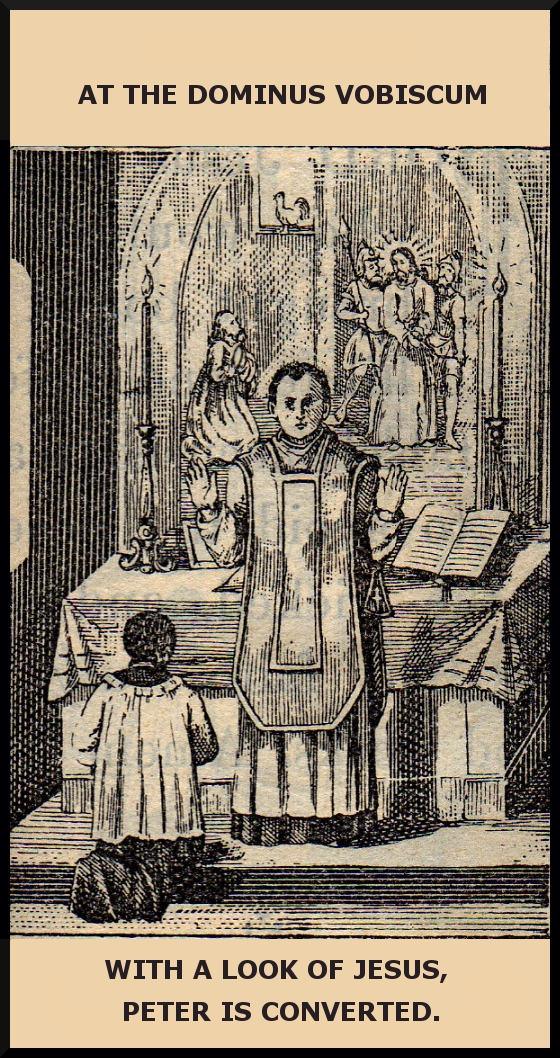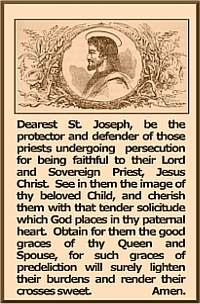 The priest reverently kisses the middle of the altar where rests the altar stone with relics. This kiss is a sign of love and greeting to Christ and His saints who are united with Him in Heaven. Then, turning around, but with lowered eyes, he as mediator between heaven and earth, greets the Church militant with the first Dominus vobiscum.
The priest reverently kisses the middle of the altar where rests the altar stone with relics. This kiss is a sign of love and greeting to Christ and His saints who are united with Him in Heaven. Then, turning around, but with lowered eyes, he as mediator between heaven and earth, greets the Church militant with the first Dominus vobiscum.
By kissing the altar before greeting the faithful, the Roman Daily Catholic Missal explains that the priest first “breathes in, so to speak, the love and spirit of Jesus Christ”, which he as mediator between heaven and earth, can then extend to the faithful with the words, “The Lord be with you.”
By the kiss to the altar, and then the greeting, the priest would have us know that all graces and blessings come from the Holy Sacrifice on the altar. The gift of the love of Christ and his grace rebounds back to the priest with our response, “And with thy spirit.”
With this first Dominus vobiscum, we recall, as Gihr teaches, that “salvation and blessing for time and eternity are…essentially comprised in the Dominus vobiscum” for without Christ we have nothing.
It was a look of love directed at Peter which converted him. May we respond, like Peter, with love and fidelity in carrying our crosses of daily duty.
We may pray in this vein: “ Lord Jesus Christ, who, mercifully looking back on Peter, caused him to bitterly weep for his offense, look on me, I beseech Thee, with the eye of Thy mercy, that I may fully lament my sins and hereafter, faithfully follow Thee all the rest of my life, my Lord and my God. Amen.”
The Dominus Vobiscum is not used at this point in the Novus Ordo. As a matter of fact, while the TLM has 8 such blessings bestowed on the faithful, (each coming with particular graces, depending on the place of the Mass where it is imparted) the N.O. only has three Dominus vobiscum’s; furthermore, the priest does not first kiss the altar before any of those 3 Dominus vobiscum’s, thereby losing rich, mystical significance, and most likely, graces.



